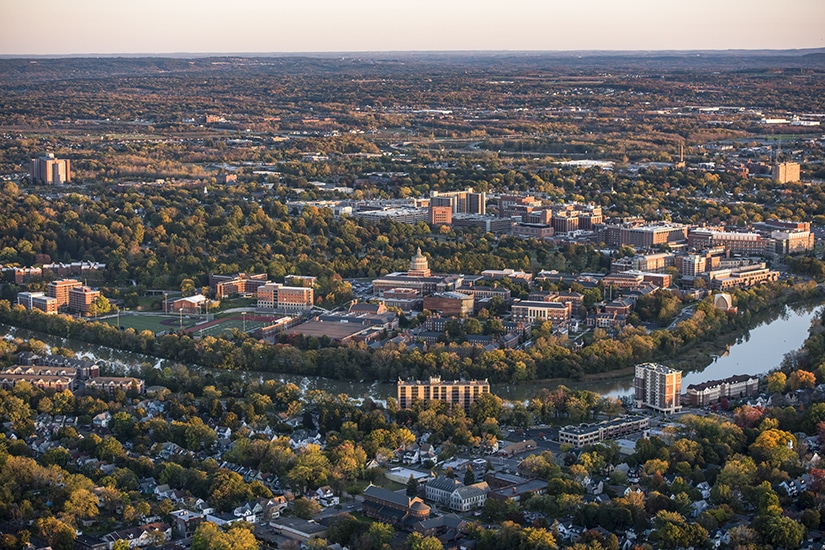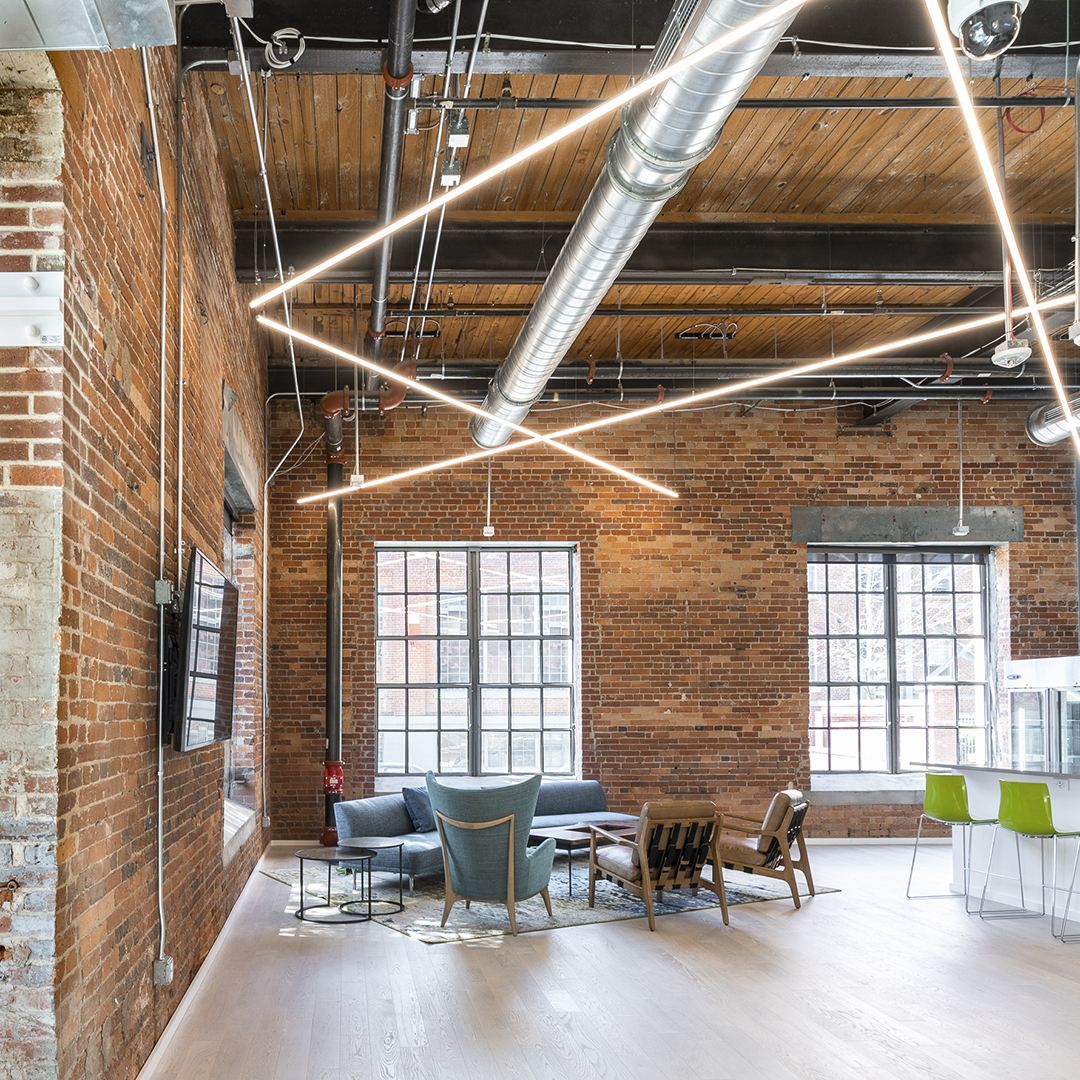|
Getting your Trinity Audio player ready...
|
Justin Fallon Dollard has crisscrossed the nation throughout his career, or as he puts it, “just [gone] where the work is.” Virginia; Washington, DC; Washington state; Oregon; and Missouri have all offered project planning and city design opportunities for Dollard to build out a wide swath of both public and private building experience. The now senior director at the University of Rochester’s planning and project management group no longer has to hit the road in search of work; he just has to reach across his desk.
With a project list that currently hovers around 80 items, the director has products that run the gamut at the U of R. He’s only a year and a half into the job, but Dollard wasted little time getting into the weeds on rehabs, modernization efforts, and new builds at one of the most prestigious research universities in the nation.

Leveraging Experience and Volume
“The U of R has really brought together all the things I’ve done in my career thus far in terms of architectural training in the various markets I’ve worked in,” Dollard says. “Literally every day, I can point to something in my education or training or prior career trajectory that I draw on that helps inform the work I do here.” That ranges from more traditional architectural firm projects to financing and bond initiatives at Portland Public Schools, where Dollard led a team that helped achieve the largest public bond program at the time in Oregon state history. “I’ve been on the campus planning side, having worked and reported directly to boards of public institutions of the private nonprofit side as well,” the director says.
Of the 80 projects on the table, Dollard is required to dip into that reservoir of knowledge every day because the variety of ongoing work is simply incredible. Dollard oversees a $1.2 billion-dollar budget for the research university, the largest to date, but when it comes to the continuing development of the university’s healthcare and hospital facilities, Dollard said the design making is about far more than just dollar signs.
Want to read more stories like this? Subscribe to our bimonthly newsletter for curated stories, industry insights, and more!
“A lot of these design questions come down to throughput process analysis systems that help you inform your facilities’ design,” Dollard says. “And in many cases, it’s multiple throughputs throughout the facility. A child who needs emergency care isn’t coming through a throughput that was designed for adults, so a lot of my work involves working with the facilities team to help them think about these as systems that overlap. The throughput is the primary system, and all of your health care changes in terms of insurance reimbursements are modeled around throughput.”
Thinking more strategically has also applied to establishing relationships with purchasing and contracting providers. “We’re looking at when and where we can do better and how we can leverage projects by going directly to the manufacturer instead of middlemen,” Dollard explains. “When you’re ordering a gazillion door handles for the institution, it makes a lot more sense to look at it strategically rather than a series of one-offs which I think had been the traditional approach.”

“Every day, I can point to something in my education or training or prior career trajectory that I draw on that helps inform the work I do here.”
Needs for Now and Later
While there is always state-of-the-art research being conducted at the university, Dollard says it’s absolutely essential to be thinking about design needs that fit far more than just right now. “I think we need to have research labs that are designed to the highest need but can still be swing sites,” the director says. “As you modernize your facilities or when your funding source for research changes, and with it your research agenda, are those labs going to be able to be shifted quickly enough?” The highly competitive pool of research funds makes this research refocus essential, as is luring in the best and brightest minds to work on the frontlines of new research.
The university’s laser energy laboratory is one of the most competitive research labs for laser energy in the nation. But Dollard’s team is always trying to think ahead. “We’re in the process of trying to figure out what we need to do to continue to be competitive as we seek out additional grants and research contracts at the federal level,” the director explains. “How do you design these labs that are for very specialized agendas but have enough flexibility that as needs change, we can remain competitive? Otherwise, you’re just designing a box made to hold one thing.”
But there are so many more projects on Dollard’s plate. A baseball and softball field renovation, a new stadium build, an athletic center renovation, an indoor pool heating system overhaul, business school classroom renovations, a library renovation, a study space renovation, a new library research lab for virtual reality, a joint engineering-business hybrid center for innovation, a new performing arts center under construction on the main campus, a sound engineering lab build, chemistry lab renovations, the aforementioned laser lab rehab, and the numerous and extensive healthcare and medical facilities that have required the University of Rochester to take the overflow of patients caused by the closing of three separate hospital systems in the area.
Over the last year and change, Dollard says he’s most proud of helping his institution become more data driven when it comes to its project management. “Just this year, we were able to help the U of R become more data driven on its capital planning as well,” Dollard says. “We’re creating a cost database for capital planning purchases. It will help us not to ever find ourselves short when we go into a project.” Whether it’s a project happening tomorrow or five years from now, Dollard wants to be five steps ahead to keep the University of Rochester at the forefront of its field.


